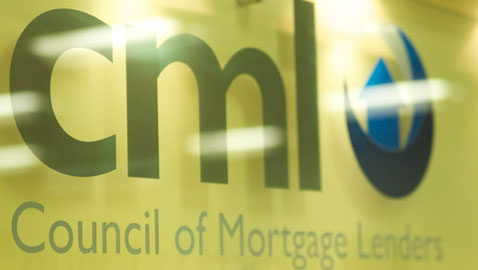
Gross mortgage lending increased by 5% in April, partly down to an increase in remortgage activity, according to new data released by the Council of Mortgage Lenders (CML).
Remortgage activity gained some ground in April while house purchase lending edged down in April compared to March.
Remortgage lending
A total of £3.4 billion was advanced to borrowers remortgaging in April, up by 10% compared to March. There was still a 3% fall compared to April last year but the rate of fall has decreased over the past two months.
Table 1: Loans for house purchase and remortgage
|
|
Number of house |
Value of house |
Number of |
Value of remortgage |
|
April |
42,600 |
6,300 |
25,600 |
3,400 |
|
Change from |
-0.9% |
No change |
7.1% |
9.7% |
|
Change from |
22.4% |
21.2% |
-5.5% |
-2.9% |
First-time buyers
First-time buyers took out 19,400 loans (worth £2.5 billion) in April, down by 1% compared to March. Although year-on-year comparisons are distorted by the impact of the end of the stamp duty concession on lending in March and April last year, activity in the first four months of the year (70,700 loans) was 11% stronger than the same period last year (63,500 loans).
First-time buyers continued to account for an increased proportion of all house purchase loans. 46% of all house purchase loans in April were advanced to first-time buyers (unchanged from March) but considerably higher than the 38% average seen since 2007.
First-time buyers typically borrowed a slightly larger amount in April than in March. First-time borrowers typically borrowed 3.25 times their income, up marginally from 3.24 times in March. Despite the modest increase in loan size relative to income, first-time buyer mortgage payments took a slightly lower proportion of their income – 19.1% in April compared to 19.3% in March.
In April, the average loan-to-value ratio edged up to 81% which could be an indicator of higher loan-to-value mortgages feeding though to the average loan-to-value figure
Table 2: First-time buyers, lending and affordability
|
|
Number of loans |
Value of loans £m |
Average loan to value |
Average income multiple |
Proportion of income spent on interest payments |
Proportion of income spent on capital and interest payments |
|
April |
19,400 |
2,500 |
81% |
3.25 |
12.1% |
19.1% |
|
Change from |
-1.0% |
No change |
80% |
3.24 |
12.2% |
19.3% |
|
Change from |
57.7% |
66.7% |
80% |
3.16 |
12.6% |
19.1% |
Home movers
A total of 23,500 loans (worth £3.8 billion) were advanced to home movers in April, down by 1% (3% by value) compared to March but an increase of 4% (3% by value) compared to April last year.
Table 3: Home movers, lending and affordability
|
|
Number of loans |
Value of loans £m |
Average loan to value |
Average income multiple |
Proportion of income spent on interest payments |
Proportion of income spent on capital and interest payments |
|
April |
23,300 |
3,800 |
71% |
2.87 |
9.2% |
18.3% |
|
Change from |
-0.9% |
-2.6% |
70% |
2.88 |
9.3% |
18.4% |
|
Change from |
3.6% |
2.7% |
70% |
2.90 |
10.0% |
19.1% |
House purchase lending
House purchase activity was little changed in April, and like the underlying components – first-time buyer and home mover activity – the number of loans advanced edged down slightly.
While there was no change in the value of house purchase lending, the number of loans advanced dipped compared to March. A total of 42,600 house purchase loans (worth £6.3 billion) were advanced in April, compared to 43,000 loans in March. As with first-time buyers, comparisons with a year earlier are distorted by the end of the stamp duty concession, but if we compare the first four months of this year with the same period last year there was a 1% increase in house purchase activity.
CML director general Paul Smee said: “Lending to first-time buyers remains above the levels seen at the same time last year, despite the boost caused by the end of the stamp duty holiday in March last year.
“The Help to Buy scheme announced in this year’s Budget should provide a further boost to the first-time buyer and home mover markets, but we still await further details on how the initiatives will work.”
Paul Hunt, managing director of Phoebus Software said: “There has been a significant improvement in the lending environment as a whole. Lenders are more willing to lend to high LTV borrowers, which is starting to clear the bottleneck in the housing market and boost house sales all the way up the property chain.
“There has been a real commitment from lenders to support first time buyers, by offering an attractive range of mortgage deals, thanks in no small measure to the Funding for Lending Scheme. Lenders have been central in supporting this demand from the bottom tier of the market.
“All eyes will be on the much-maligned Help to Buy scheme over coming months – it may yet inflate house prices and could be hijacked by buy-to-let investors and foreign buyers, rather than the first-time buyers that it is designed to help.”














